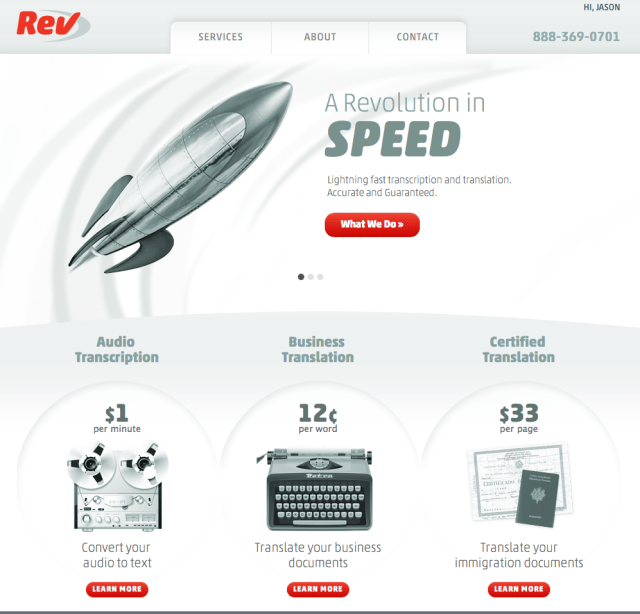Editor’s note: David Teten is a partner with ff Venture Capital and founder and chairman of Harvard Business School Alumni Angels of Greater New York. Follow him on his blog or on Twitter @dteten.
Lots of venture capitalists claim to add value to the companies in which they invest. But how do they do it? And does it really produce better returns for their investors? We recently wrapped up a study on best practices of venture capitalists in creating portfolio company value through operational support, exploring exactly these questions.
We found that certain VCs are aggressively building out a focused portfolio operations skill set and recruiting more people with operational backgrounds. Based on a range of sources, we believe that most funds with well-developed portfolio operator models have top-quartile returns (typically above 20 percent IRR in the relevant time periods).
Given the mediocre median returns of the VC industry and the high failure rate of the typical entrepreneur, techniques to improve the odds of success are highly needed.
 Adding Value
VCs can add more value to their portfolios through team building, operations, perspective, skill building, customer development, analysis, and the network (the “TOPSCAN†framework):
Team Building: Designing and recruiting for a startup’s most important asset, its human capital base.
Operations:Â Enhancing administrative, accounting, legal, and technological capabilities.
Perspective:Â Strategy, competitive positioning, defining the target market, and scoping the product.
Skill Building:Â Building the right skills, especially for senior management.
Customer Development:Â Identifying and gaining access to the right customers.
Analysis:Â How entrepreneurs measure, understand, and report the performance of their early-stage companies.
Network: The cheapest and sometimes most value-added service that an investor can provide is access to his/her network, particularly to potential investors and acquirers.
The portfolio operator strategy has potential to boost returns.
A company’s need for these services is greatest in its earlier life. However, even among private-equity funds that invest in late-stage, stable, established companies, we see many such funds building portfolio operations groups. Later-stage, private-equity firms clearly believe that their portfolio companies benefit from a similar pool of operational talent, despite the fact that their companies are far more complete in their management and developed in their strategy than the companies backed by VCs.
The portfolio operator strategy has potential to boost returns. Our thesis that greater participation correlates with higher returns is consistent with two other formal studies: “Returns to Angel Investors in Groupsâ€, and “Prediction and Control Under Uncertainty: Outcomes in Angel Investing.†Both studies found that higher levels of angel participation in investments, as measured by number of hours per week interacting with a portfolio company, correlates with higher returns.
In addition, VCs (particularly those focused on Internet investments) live in a social-media-enabled world where almost every investor has a very visible public resume on LinkedIn; many have a public blog; and blogs and sites such as TheFunded.com closely track their behavior. Social media footprints make it exceptionally easy for entrepreneurs to assess precisely how much value a potential investor can add and reach out to those investors specifically. Deal origination becomes very easy for firms with a strong reputation for adding value.
Current Practices
VCs have five main resources with which to increase portfolio company value: cash, brand, industry network, funding network and in-house expertise.
- Cash. A significant operational toolkit is expensive. Given the low average returns of the VC industry, and the modest assets under management of VCs relative to the assets under management of a typical private-equity fund, many VCs simply cannot afford to invest meaningful dollars in a large portfolio acceleration infrastructure.
- Brand. The fact that a company has been funded by a well-respected fund/partner alone can increase a company’s odds of success, because that brand makes it easier for the company to attract talented employees and follow-on investors. By definition, startups have no brand at launch.
- Industry network. One entrepreneur observed about one of the most prominent VCs in America: “[X]’s default response to all problems is to email introduce you to 3-10 people in his network who can help.â€
- Funding network. Later-stage VCs pay careful attention to the earlier funders in a company, using the reputations of the funders as a proxy for their own diligence. The next-best asset to a large pool of capital in-house is the ability to easily help raise more capital in later rounds from past syndicate partners.
- In-house expertise. VCs can provide consulting, accounting, or operational resources, both directly from their own staff and from preferred service providers.
All of the resources above are synergistic, i.e. more success creates more cash, which strengthens the brand, which increases the industry and VC network, which strengthens the in-house expertise. This is one of the key reasons that venture capital is one of the few asset classes in which past performance is predictive of future results.
 There are three common categories of VCs in terms of attitude and practices toward investing and portfolio company support: financiers, mentors, and portfolio operators, ranked in order of increasing level of operational involvement.
There are three common categories of VCs in terms of attitude and practices toward investing and portfolio company support: financiers, mentors, and portfolio operators, ranked in order of increasing level of operational involvement.
1. Financiers: “I’m a banker, not an operator.â€
The financiers are the most traditional group of VC investors; one said he views venture capitalists as “glorified commercial bankers.†Financiers believe that the most value added by a VC comes from carefully scrutinizing early-stage companies, generating leads, conducting a thorough due diligence process, and eventually investing the right amount of capital at the right valuation and structure. The relationship to their portfolio after making the investments primarily consists of monitoring.
Of course, the financiers are not completely detached from what is going on in their portfolio companies, but they tend to focus more on formal interaction. Examples include VCs taking board seats, suggesting structures for board meetings, and providing monthly reporting templates.
The most perfect example of a financier is Correlation Ventures, which some have called the “Moneyball†of venture capital. Even though the firm’s two managing partners are both former startup entrepreneurs, Correlation never takes board seats and has only modest operational involvement. They gain access to investment opportunities by offering a very rapid investment decision (two weeks or less), with a very low hassle process, leveraging their large investment in predictive analytics. They have $165 million in assets under management. Other examples are Right Side Capital Management and i2x.
 2. Mentors: “I try to be the CEO’s consigliere.â€
2. Mentors: “I try to be the CEO’s consigliere.â€
Most VCs can be classed as mentors. Mentors believe their fund and personal assets can improve the performance of the ventures they invest in. The most important asset they bring to the table is their personal and professional network, which they leverage to strengthen portfolio companies. Throughout our research, we observed many examples of this: introductions to potential customers, suppliers, partners, and executive-level employees.
What distinguishes the mentors from the portfolio operators, however, is that they deliberately choose not to institutionalize the support they give to their portfolio companies. Support is almost always initiated by the entrepreneur and does not involve preset systems or processes. As one mentor said, “My entrepreneurs have my cell and email address â€" and I always answer them.†As a result, mentors assessing a new investment need to be comfortable that their input will be heard by the companies â€" that the CEO is coachable.
In the past few years, there has been a surge of small, solo-GP funds, typically with under $40 million in assets. Although in many cases, these solo GPs have strong operational track records, they typically have limited resources to engage in-depth with their portfolio, and so would normally be classified as mentors.
3. Portfolio Operators: “We have a structured, standard process for adding value.â€
Portfolio operators agree with mentors that their unique personal and fund assets can be used to develop their portfolio companies. However, unlike mentors, portfolio operators do this in an institutionalized and structured way. Whereas mentors tend to be reactive in their support, portfolio operators pro-actively look for ways to improve the performance of their investments through systems and processes. We know of numerous instances in which companies took lower valuations to win portfolio operator VCs as investors versus other categories of VCs, because the entrepreneurs so valued the resources a portfolio operator could bring to bear. In other cases, entrepreneurs have offered board options or other sweeteners to highly attractive portfolio operator VCs.
 The most common service portfolio operators offer their portfolio companies is recruiting assistance. Most of the VCs in this category not only provide personal references to interesting candidates, but also use their own websites as job boards for portfolio companies. First Round Capital takes this a step further by running a program in which they recruit MBAs for internships and full-time positions with their portfolio companies.
The most common service portfolio operators offer their portfolio companies is recruiting assistance. Most of the VCs in this category not only provide personal references to interesting candidates, but also use their own websites as job boards for portfolio companies. First Round Capital takes this a step further by running a program in which they recruit MBAs for internships and full-time positions with their portfolio companies.
We find that portfolio operator VCs are building teams of employees that are unusually large for the VC industry and include many people with strong operational backgrounds. These larger teams tend to be accompanied by a transition toward pyramidal organizations, which are increasingly becoming the norm in portfolio operator funds.
As Harvard Business School professor Noam Wasserman discusses in his paper “Upside-down Venture Capitalists and the Transition Toward Pyramidal Firms: Inevitable Progression, or Failed Experiment?† VCs have long been structured as “upside-down pyramids†in which general partners outnumber more junior employees. This phenomenon is attributable to the fact that VCs are “knowledge intensive firms in which esoteric expertise predominates over standard knowledge.â€
Moving Toward The Pyramid
The need to exchange rich information in the course of pre-investment activities (e.g. due diligence) serves as a dis-incentive to expand the firm beyond a certain size or adopt formal, pyramidal structures. Those structures are, to a certain extent, an emergent property of large and/or complex organizations, in which workers become specialized and need to structure their interactions more. Although later-stage VCs have the luxury of concrete quantitative data, early-stage VCs rely on more tentative information for which analysis cannot be easily delegated.
Post-investment activities such as operational support for portfolio companies, however, can be delegated and benefit from economies of scale. Pyramidal structures are the most efficient means of systematizing and delivering this support due to the benefits of leverage, delegation and specialization.
Three trends are accelerating the transition to pyramidal models and operational focus. First, the cost of starting a company has come down dramatically, and as a result young entrepreneurs with modest capital and only angel/Series A investors can find themselves leading significant businesses beyond their management capacity.
Second, the rate at which startups can scale has increased dramatically, so the judicious application of VC resources can have an exponential impact.
The pyramidal model ultimately won out in more mature knowledge-intensive industries.
Finally, we have moved to a more transparent world in which both VCs and entrepreneurs find it easier to conduct due diligence. This puts pressure on VCs to differentiate themselves substantively. The pyramidal model ultimately won out in more mature knowledge-intensive industries, such as law and investment banking, and the same may occur in venture capital.
Snapshots: Portfolio Operators
An example of a portfolio operator VC is Andreessen Horowitz, which has raised $2.7 billion since it was founded in 2009 and has made investments in Airbnb, Facebook, Skype, Twitter, Instagram and many other highly successful startups. They give their portfolio companies structured support through one of their four operational support teams, focused on executive recruiting, marketing/PR, technology, and business development. The fund has seven partners and employs more than 40 operational staff, helping portfolio companies with preparing negotiations, making client introductions and providing preferred suppliers.
My firm, ff Venture Capital, has a similar strategy; it has made more than 160 investments in more than 60 companies since 1999. As of October 2011, the firm had $38 million in assets under management and today has 16 full-time employees (including three general partners). We offer our portfolio companies resources, including a job board, recruiting assistance, strategy consulting, a mentor network, a pool of service providers, a portfolio executive community and accounting services.
First Round Capital is another example, with seven partners with more than $400 million in assets under management and 22 full-time employees. FRC has a wide range of initiatives to support portfolio companies. For example, they organize yearly CEO, CFO and CTO summits in which executives of all portfolio companies in certain roles come together, as well as a related online community. Because of the internal, closed nature of the platform, it has become a trusted source for advice (e.g. “Our finances are out of control and we need a CFO yesterday; what should we do?â€). They offer the portfolio free access to a ‘venture concierge,’ a lightweight consulting and research service that helps their entrepreneurs save time on research-related tasks.
Google Ventures has over 115 portfolio companies, makes 60-80 investments per year, and is investing north of $100 million per year. They leverage both Google’s vast resources and a dedicated 54-person team, including 10 partners. Joe Kraus, partner, observed, “We believe helping companies plays more of a role than most people give it credit for.â€
Given the economic constraints of the industry, how else can VCs systematically increase the odds that their portfolio companies will be successful?
This is a summary of the full original study, which was co-authored with Adham AbdelFattah, founder and CEO of CircleVibe and a consultant on leave from McKinsey & Co.; Koen Bremer, a consultant with the Boston Consulting Group in Amsterdam, Holland; and Gyorgy Buslig, a consultant with McKinsey & Co. in Budapest, Hungary. Â
[Image via]






 I remember a very early version of Firefox had crashed, taking with it my open Bloglines tab and thus losing the 100+ items that it would surely “mark as read.†If I went back to Bloglines it would appear as if I had read all of those items, and there would be no way to catch up. I was upset!
I remember a very early version of Firefox had crashed, taking with it my open Bloglines tab and thus losing the 100+ items that it would surely “mark as read.†If I went back to Bloglines it would appear as if I had read all of those items, and there would be no way to catch up. I was upset! I wondered this aloud to Chris Wetherell one day in 2004, an engineer on the Blogger team.
I wondered this aloud to Chris Wetherell one day in 2004, an engineer on the Blogger team. In October 2005, Google Reader launched to 100,000 of our closest friends. The team pulled off some amazing feats in a short amount of time. We quickly learned that there was indeed a truly long tail of feed-based content. We experimented with audio, video and photo content displays. We became the relied-upon backend for iGoogle’s feed-based gadgets and had a Reader gadget on iGoogle that became one of my favorite ways to use Reader.
In October 2005, Google Reader launched to 100,000 of our closest friends. The team pulled off some amazing feats in a short amount of time. We quickly learned that there was indeed a truly long tail of feed-based content. We experimented with audio, video and photo content displays. We became the relied-upon backend for iGoogle’s feed-based gadgets and had a Reader gadget on iGoogle that became one of my favorite ways to use Reader. A feed reader lets you subscribe to known content. A feed reader lets you know about content you should subscribe to. A good feed reader lets you know what your friends are reading and gives you the opportunity to share. A smart feed reader displays content in a specific way based on the content and shows you only what you need to know and nothing you don’t. Perhaps the smartest of them all doesn’t need to care whether or not this content comes from a feed at all, toes the line between curating and creating content, and maybe already exists.
A feed reader lets you subscribe to known content. A feed reader lets you know about content you should subscribe to. A good feed reader lets you know what your friends are reading and gives you the opportunity to share. A smart feed reader displays content in a specific way based on the content and shows you only what you need to know and nothing you don’t. Perhaps the smartest of them all doesn’t need to care whether or not this content comes from a feed at all, toes the line between curating and creating content, and maybe already exists.



